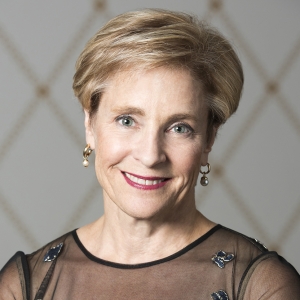Promising new therapies are giving hope to Alzheimer’s patients and families, so why limit access?

By Sally Greenberg, Executive Director
For years, Alzheimer’s patients, families, and caregivers have battled a condition with no treatment options. This year alone, an estimated 6.5 million Americans age 65 and older are living with Alzheimer’s.
The good news is, we’ve recently seen remarkable progress in the fight against Alzheimer’s disease as innovative treatments demonstrated the ability to halt disease progression in a major clinical trial and proved to curb cognitive decline. These therapies targeting the buildup of amyloid beta plaque in the brain (one of the telltale signs of Alzheimer’s) have shown promise for so many patients and families facing this fatal diagnosis.
The first such therapy was approved by the U.S. Food and Drug Administration (FDA) in June of last year. This should give us all hope for a brighter future, but this progress may be moot if regulatory barriers hinder patient access.
Rather than ensure broad coverage through the Medicare program – as is the case for nearly every other type of drug that receives FDA approval – the Centers for Medicare and Medicaid (CMS) decided this spring to restrict access to these new Alzheimer’s treatments only to patients participating in approved clinical trials. This puts severe limitations on coverage for an entire class of innovative Alzheimer’s disease treatments, with CMS in direct conflict with the FDA, whose medical experts approved the drug as safe and effective.
In fact, this puts the FDA’s entire accelerated approval pathway in the crossfire, sounding an alarm to millions of patients hoping for medical breakthroughs.
No one is arguing the therapy is a miracle cure, but that’s not how new therapies tend to work. History has shown that when it comes to serious conditions with high unmet medical needs, even small improvements are critical.
Accelerated approval first surfaced during the AIDS crisis, when HIV was a death sentence and there were no treatments. AIDS advocates demanded something – anything — despite minimal benefits “because we have nothing now and no hope.” The first AIDS treatments in the 1980s were grueling regimens with serious side effects, but they had to start somewhere. Today, as medicines have evolved, HIV-positive patients require one pill a day and can live with the disease.
The same is true for Duchenne’s Muscular Dystrophy, a terminal disease that lands young boys in wheelchairs often before they reach 10 years old. Approval of the first drug to treat Duchenne’s met significant controversy in 2016 because it was minimally effective. Yet, the FDA approved it because these patients had no hope. Today there are five treatment options for the disease that slows down the progression and buys time.
And in 2001, a game-changing therapy for chronic myeloid leukemia received approval; the treatment helped to spur innovation in what became targeted therapies for cancers.
The science and medical ecosystem will continue to naturally progress, moving us from zero treatment options to medicines that mitigate symptoms, to treatments that halt disease progression, and eventually, cures. This is true in the Alzheimer’s space, but by limiting access to an entire class of Alzheimer’s treatments, CMS is putting future scientific breakthroughs at risk and creating a ripple effect throughout the entire healthcare system. This new promising drug class will only be available to those with the financial wherewithal to pay thousands of dollars out of their own pockets.
With this precedent, any drug that emerges from the rigorous development pipeline could be deemed too expensive or too early in the discovery phase. CMS acting as the final arbiter on what new treatments will be made available and overriding the scientific judgment of FDA experts should concern all of us.
As we look ahead toward a new Congress, our lawmakers can and should put pressure on CMS to keep pace with the science and give hope to Alzheimer’s patients and families.














